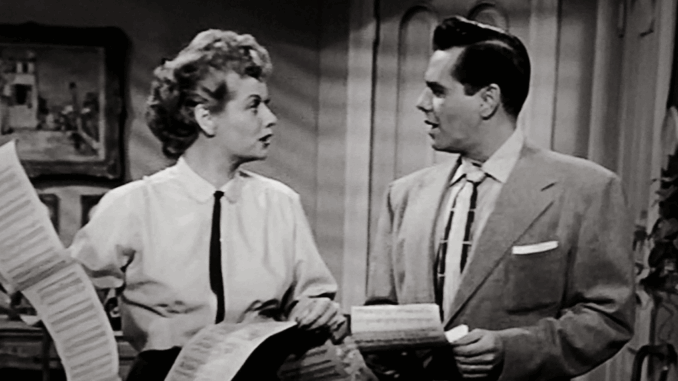
Hollywood, CA – In an era long before viral pranks and candid vlogs dominated our screens, one trailblazing sitcom was already capturing the magic of unscripted reactions and genuine laughter: I Love Lucy. While not literally using hidden cameras, Lucille Ball and the brilliant minds behind the show masterfully blurred the lines between scripted comedy and authentic human behavior in ways that feel remarkably similar to the reality content we consume today on platforms like YouTube and TikTok.
Lucille Ball: The Queen of Natural Reactions
Lucille Ball was a comedic genius, and a significant part of her brilliance lay in her unpredictable physicality and incredibly expressive face. While the scripts were sharp and witty, Ball’s commitment to embodying Lucy Ricardo with such raw, unfiltered emotion often led to moments that felt genuinely spontaneous. Her reactions to Desi Arnaz’s exasperation, Vivian Vance’s dry wit, and William Frawley’s curmudgeonly charm weren’t just acted; they felt lived.
Think about her iconic wide-eyed stares, her exaggerated gasps, her clumsy mishaps – these weren’t just perfectly timed comedic beats. They were the natural outbursts of a character constantly getting herself into ridiculous situations, and Ball’s commitment to making them feel real was key to the show’s enduring appeal. It’s the same kind of authentic reaction viewers seek out in today’s unscripted online content – that feeling of witnessing something genuine and unfiltered.
The Power of a Live Audience: Real Laughter, Real Energy
One of the most groundbreaking aspects of I Love Lucy was its decision to film each episode live in front of a studio audience. This wasn’t the norm for sitcoms of the time, which often relied on laugh tracks. The presence of a live audience injected an immediate and tangible energy into every scene.
The actors fed off the audience’s genuine laughter, and this created a dynamic where performances could become more spontaneous and reactive. If a joke landed particularly well, or if Lucille Ball delivered a physical gag with perfect comedic timing, the resulting eruption of laughter was real and infectious. This immediate feedback loop contributed to a sense of unpredictability and authenticity – much like the thrill of watching a live streamer react in real-time or seeing genuine surprise in a prank video. The audience became an integral part of the show’s “reality,” validating the humor and making the experience feel shared and genuine.
Breaking the “Script” with Authentic Delivery
While I Love Lucy was meticulously scripted, the natural delivery and the improvisational feel of Lucille Ball’s performance often gave the impression of breaking free from those constraints. Her ability to embody Lucy with such a relatable blend of determination and utter ineptitude made her feel like someone you knew, not just a character reciting lines.
This is the same magic that draws viewers to YouTube vloggers or TikTok creators. We connect with the sense that we’re seeing someone’s genuine personality and reactions, even if there’s an underlying structure to the content. Lucille Ball, decades before the rise of online video, intuitively understood the power of this authentic connection.

Before there were vlogs offering glimpses into everyday life, there was Lucy living her hilariously chaotic one. Before TikTok captured spontaneous reactions, there was the uncontainable laughter of the I Love Lucy studio audience. Lucille Ball and her groundbreaking show weren’t just making comedy; they were pioneers in creating a sense of authentic, engaging entertainment that continues to resonate with audiences today, proving that the desire for genuine connection and laughter transcends technological advancements.
